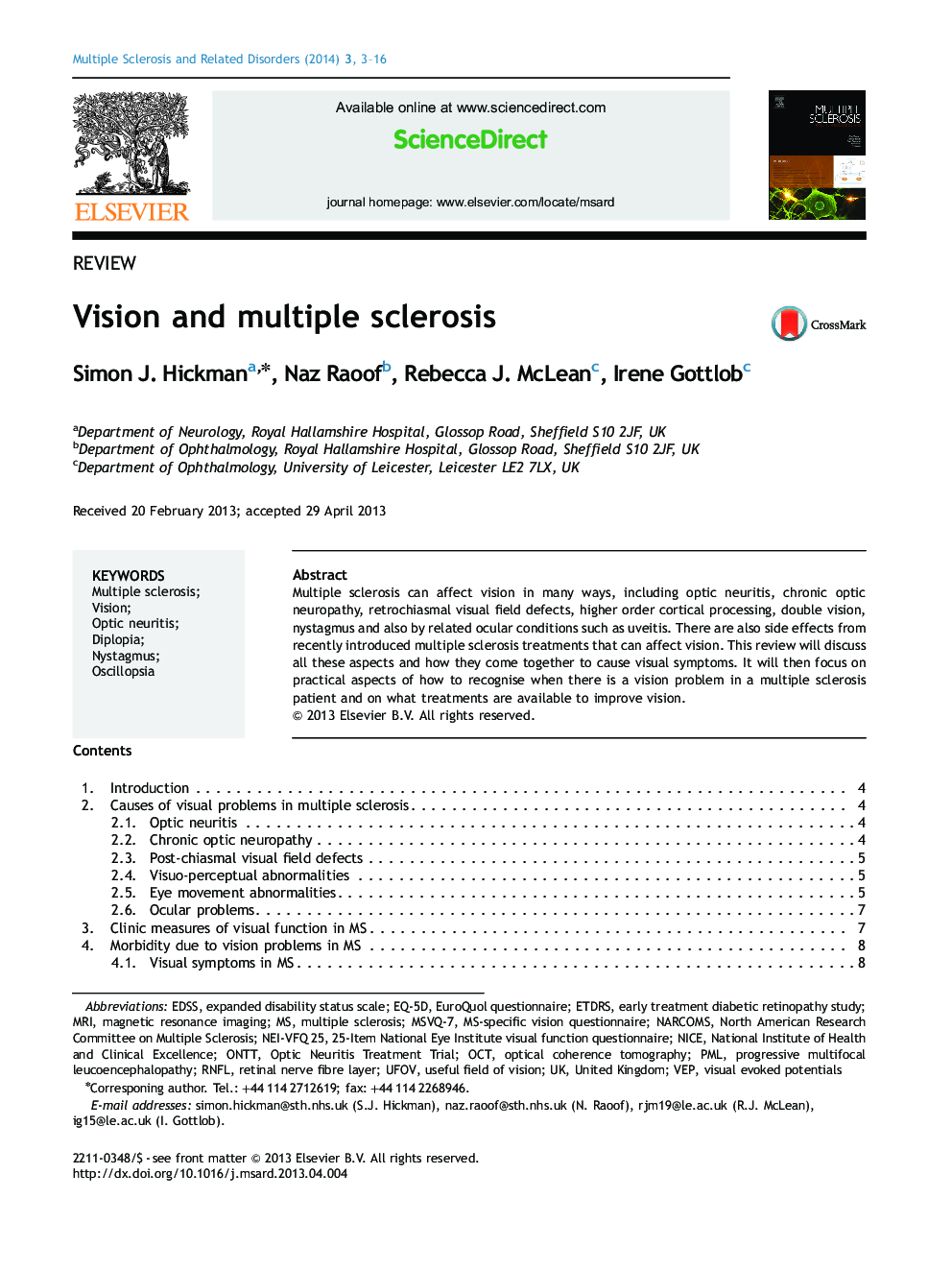| Article ID | Journal | Published Year | Pages | File Type |
|---|---|---|---|---|
| 5912753 | Multiple Sclerosis and Related Disorders | 2014 | 14 Pages |
Abstract
Multiple sclerosis can affect vision in many ways, including optic neuritis, chronic optic neuropathy, retrochiasmal visual field defects, higher order cortical processing, double vision, nystagmus and also by related ocular conditions such as uveitis. There are also side effects from recently introduced multiple sclerosis treatments that can affect vision. This review will discuss all these aspects and how they come together to cause visual symptoms. It will then focus on practical aspects of how to recognise when there is a vision problem in a multiple sclerosis patient and on what treatments are available to improve vision.
Keywords
RNFLNorth American Research Committee on Multiple SclerosisPMLNARCOMSEDSSEQ-5DETDRSVEPOscillopsiaoptic neuritisMRIUFOVOctMagnetic resonance imagingOptical coherence tomographyNICEearly treatment diabetic retinopathy studyDiplopiaRetinal nerve fibre layerprogressive multifocal leucoencephalopathyExpanded Disability Status ScaleMultiple sclerosisNystagmusVisual evoked potentialsUnited Kingdom25-item National Eye Institute Visual Function QuestionnaireVision
Related Topics
Life Sciences
Biochemistry, Genetics and Molecular Biology
Genetics
Authors
Simon J. Hickman, Naz Raoof, Rebecca J. McLean, Irene Gottlob,
